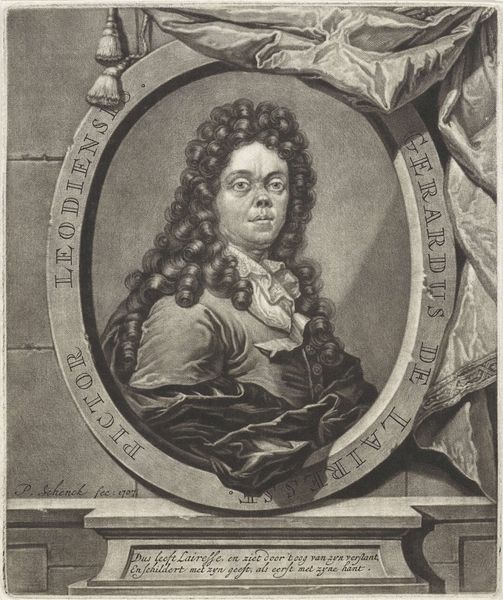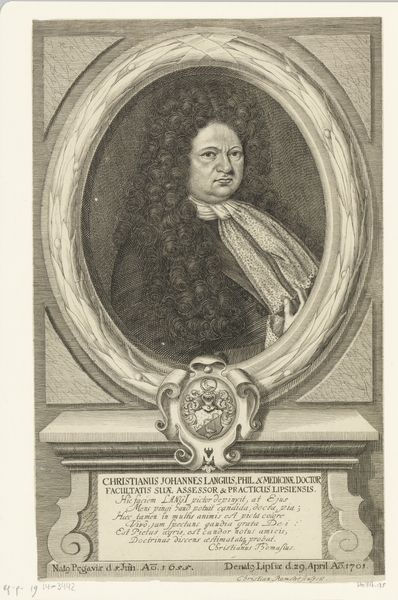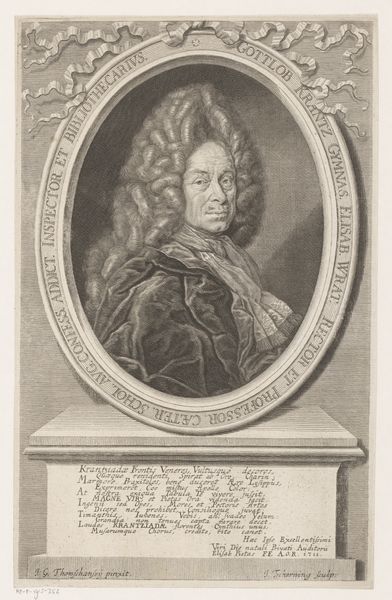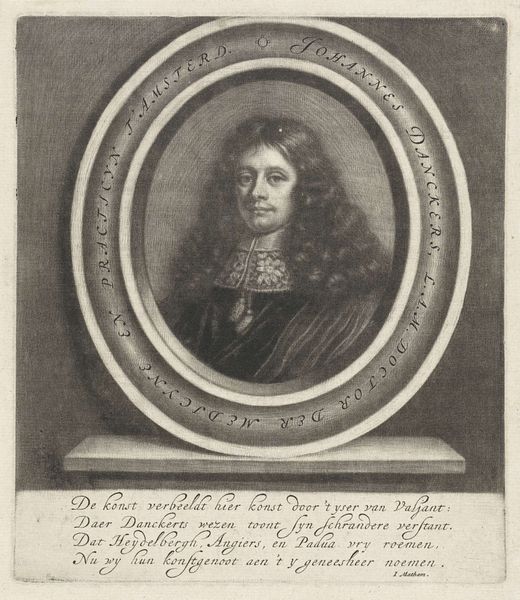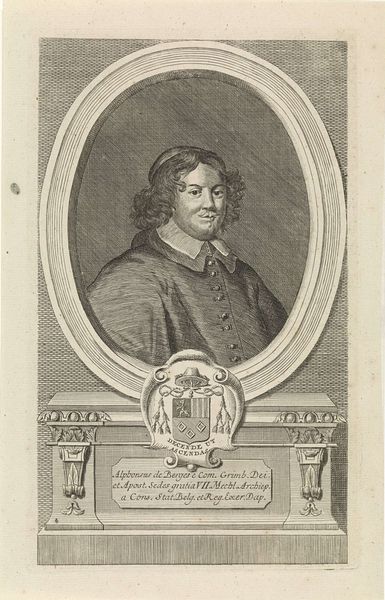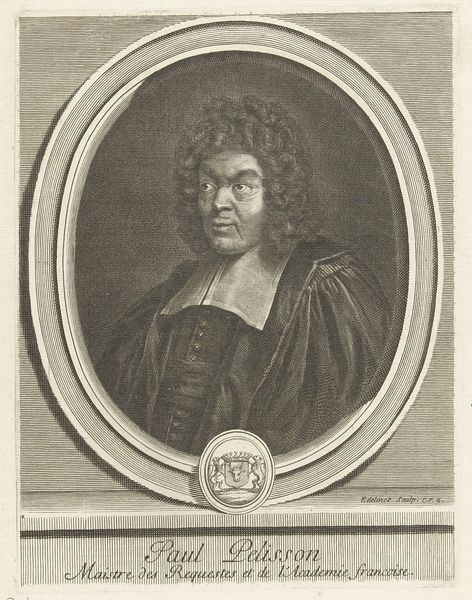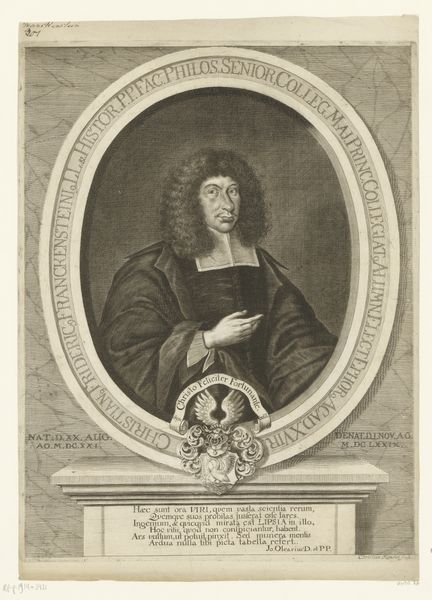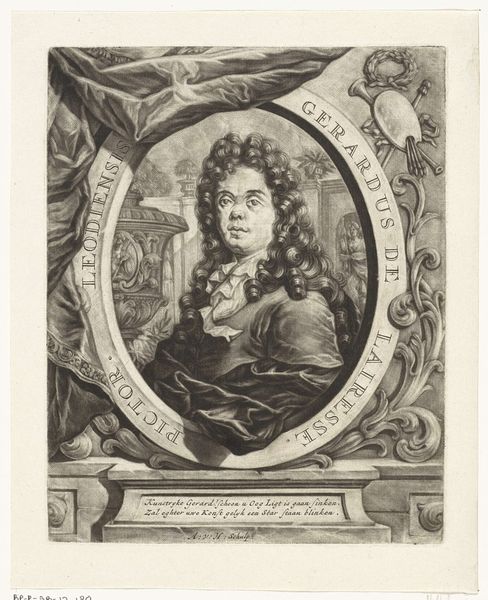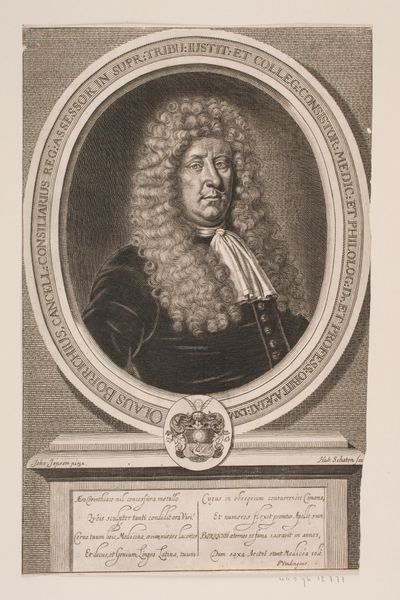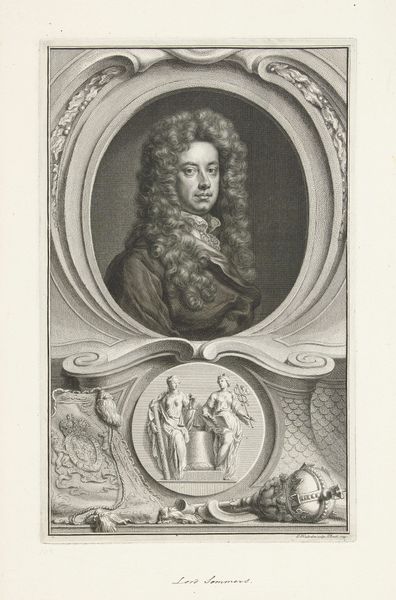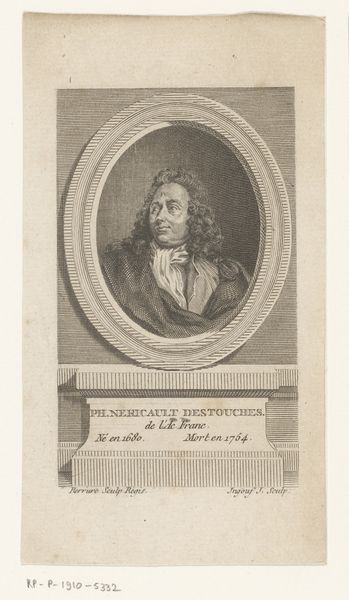
drawing, print, graphite, engraving
#
portrait
#
pencil drawn
#
drawing
#
baroque
# print
#
old engraving style
#
charcoal drawing
#
pencil drawing
#
graphite
#
graphite
#
engraving
Dimensions: height 177 mm, width 141 mm
Copyright: Rijks Museum: Open Domain
This is Jan Caspar Philips's engraving of Gerard de Lairesse, made sometime in the 18th century. It's printed on paper, but the crucial element here is the metal plate from which the image was transferred. Engraving is an exacting process. It begins with a design carefully cut into the surface of a metal plate, usually copper. Ink is then forced into these fine lines, and the plate is pressed firmly onto paper. The pressure imprints the image, creating a mirror reverse of the original design. Look closely, and you'll see the incredible detail achieved through this method. Philips masterfully used line and shadow to capture Lairesse’s likeness, surrounded by the tools of his trade. The texture is almost palpable, a testament to the engraver’s skill. Engravings like these were more than just portraits; they circulated ideas and built reputations. The labor-intensive nature of engraving speaks to a pre-industrial moment. The image becomes both a work of art and a document of its time, reflecting social status and the value placed on skilled handwork.
Comments
No comments
Be the first to comment and join the conversation on the ultimate creative platform.
